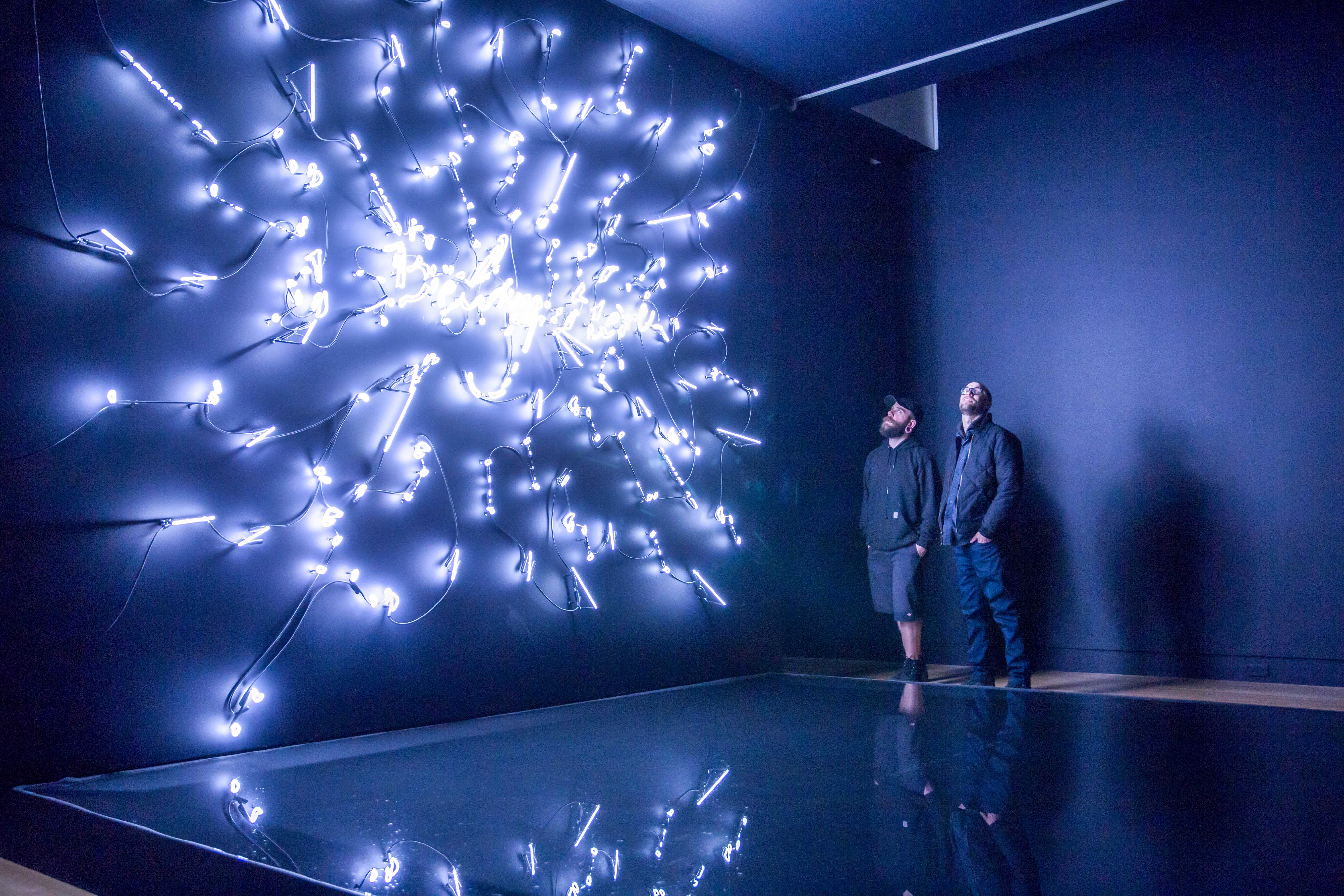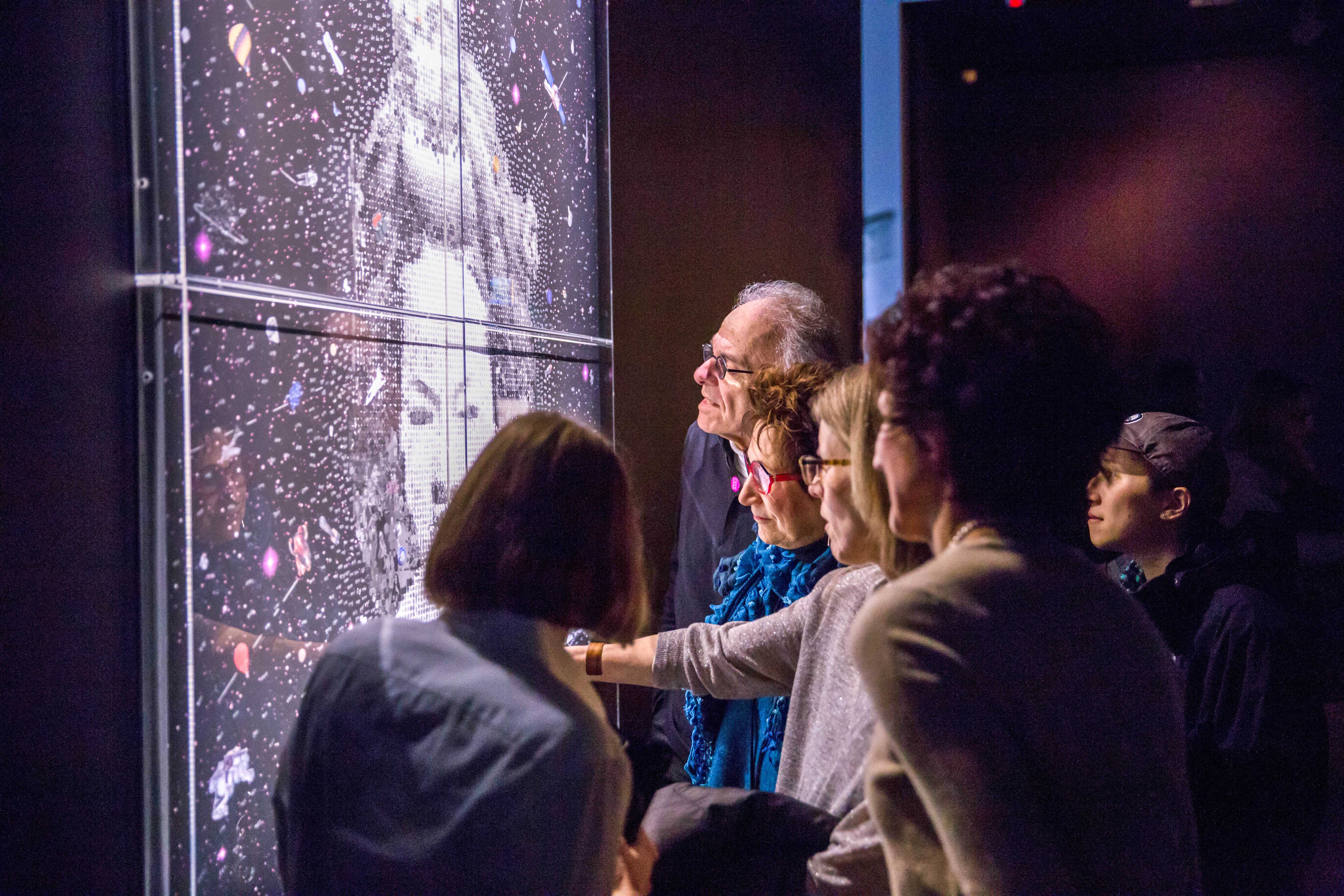Frye Art Museum presents Always, Sometimes, Never
A slow, steady drop of water falls from the ceiling of the Frye Art Museum.
Each dribble makes only the slightest of sounds as it descends into a pool of water.
The puddle of drippy proportions is one of four, all intentionally placed throughout the gallery in honor of the latest presentation, “Always, Sometimes, Never.” Some art exhibits impress momentarily but are often soon forgotten. “Always, Sometimes, Never” is not one of those exhibits.
In addition to pools of water, each room is taken over by a series of sculptures and collages that carries patrons into a dreamlike world, a dream they will not want to wake up from.

New York based artist Tavares Strachan implements sharp design as he navigates the realms of science, art and environment. The gallery opened for the public Friday, Jan. 26, with a reception complete with the clinking of wine glasses and curious chatter.
Entering the space, guests are greeted by a long corridor adorned with a line of panels, each containing a letter of the alphabet. This first installation, “A Children’s History of Invisibility,” is a series of pigment collages on matte Moab paper encompassed by acrylic frame.
Alphabetically hung, the letters hover amidst a wall of text that depict traditionally overlooked narratives. Strachan aims to shed light on the notion of invisibility and does so with extreme detail and precision.
Outlined against lambent light, the letters draw small circles of eager eyes trying to read the backsplash of text.
According to the Frye Art Museum website, there is a strong reach to highlight and call “into question the conditions that frame and legitimize certain cultural knowledge and histories while obscuring and erasing others.”
The pools of water serve as a guide as patrons float from room to room; the lights are completely shut off, making the experience all the more surreal.
Additionally, the water is a symbol of Strachan’s overarching goal to examine the ways in which society is recognized and characterized.
Strachan specifically pays homage to the geographical layout of Seattle and finds inspiration in the rainfall and waterways that extend throughout the city.
The most striking piece resides in the back room of the gallery, though it is hard to miss.
A bright light amongst the dim rooms attract crowds of patrons, many standing against the wall taking in the luminous structure before them.

In fluorescent neon light, and of course suspended above water, a sign reads “I Belong Here.” The piece demands its audience to reflect on identity, space and autonomy.
Though this work is not the only one within the gallery that actively evokes these thoughts, it is by far the most compelling.
Amongst the basins of water Strachan finds the ability to tell stories of the marginalized and unnoticed with each smudge and imprint.
What makes this exhibit so unforgettable is its dedication to this fashion of story.
The space boldly and unapologetically extends a hand towards the unseen. By doing so, it directly evokes meaningful discussion, one in which the word ‘uncomfortable’ does not have the right to exist.
Strachan moves beyond formalities and plunges into the unknown with authority. If ever there was a question to decide always, sometimes or never; the answer here is always.
“Always, Sometimes, Never” is on display through April 15, 2018.














































































